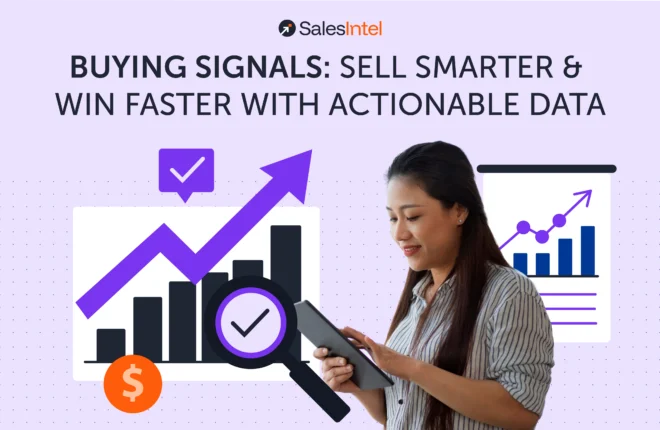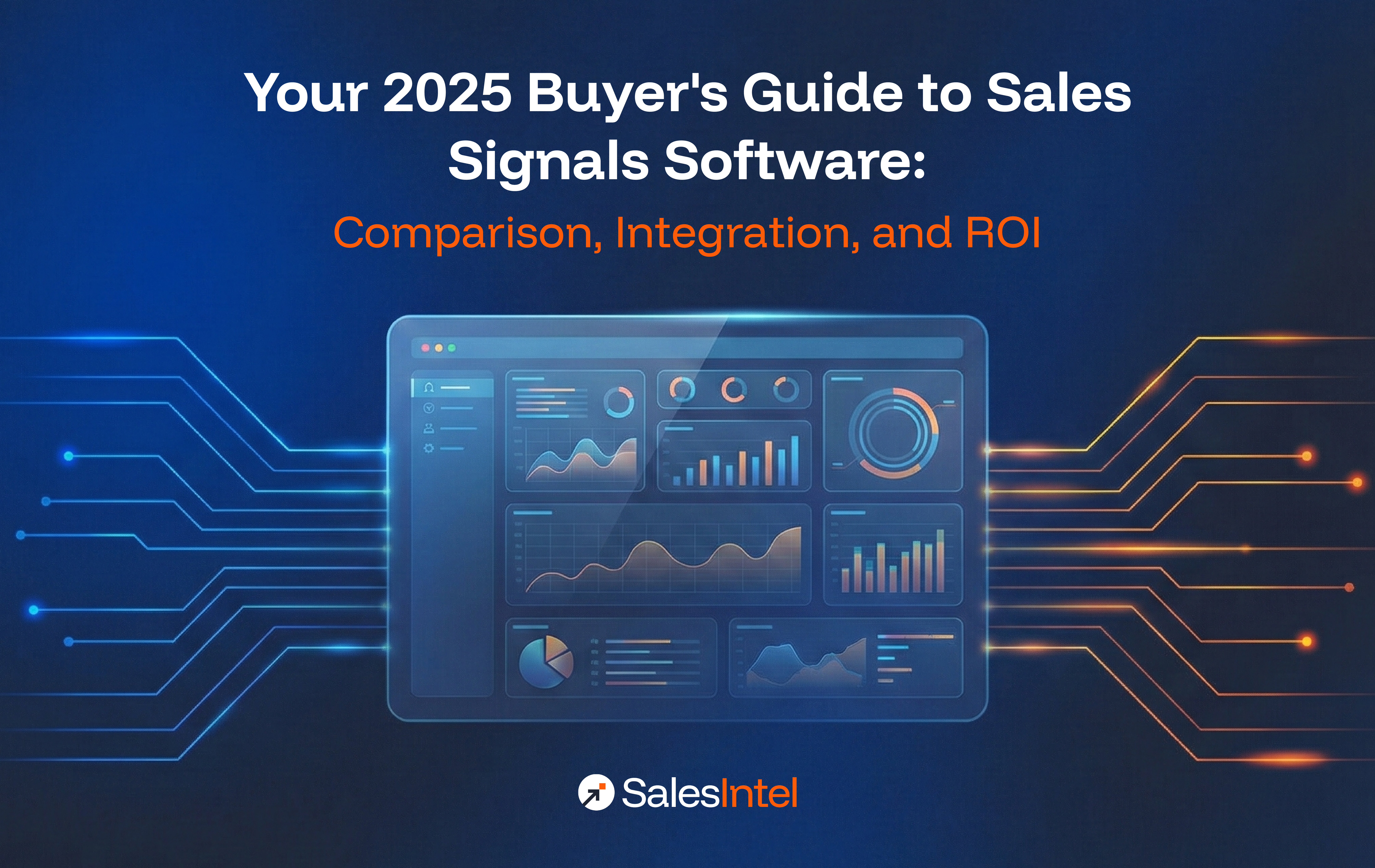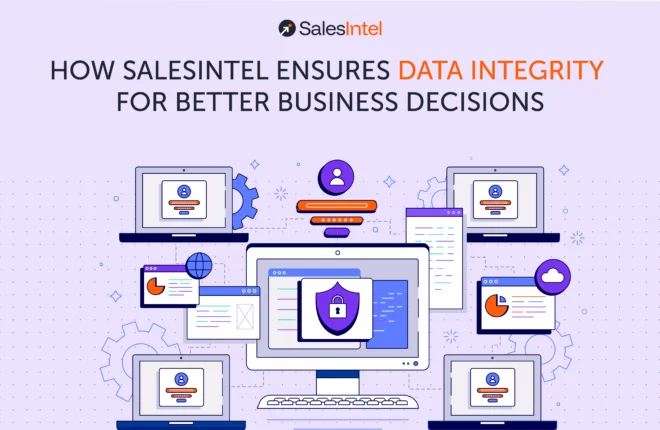Sales is often a game of timing. You could have the perfect pitch, the best product, and a well-researched prospect. But if the timing is off, the deal won’t close. What if you could tell exactly when a buyer is ready to act? That’s where buying signals come in.
These subtle (and sometimes not-so-subtle) indicators tell you when a prospect is moving closer to a purchase decision. But not all signals are created equal. Some are like a green traffic light, telling you to go full speed ahead, while others are just a flickering streetlamp i.e. interesting, but not necessarily actionable.
Let’s break down how buying signals work and how you can leverage them to sell smarter and win faster.
1. Buying Intent vs. Buying Interest – Know the Difference
Interest is great. It means a prospect is curious. But intent? That’s where deals happen.
A prospect downloading a whitepaper on industry trends might be interested in learning, but that doesn’t mean they’re looking to buy. However, if they’re comparing pricing pages, attending competitor webinars, or requesting a demo, that’s a strong signal of intent. The trick is to differentiate between passive interest and active buying behavior.
Think of it like browsing in a bookstore versus asking the cashier where the bestseller section is. One is curiosity, the other is a clear intent to purchase.
| Category | Interest Signals (Curiosity, Low Buying Readiness) | Intent Signals (Actionable, High Buying Readiness) |
| Website Behavior | Browsing blog articles, checking industry trends | Visiting pricing page, downloading product comparisons |
| Email Engagement | Opening emails but not clicking links | Clicking on CTAs, responding to outreach emails |
| Competitor Activity | Following competitor on LinkedIn, reading general content | Attending competitor webinars, engaging in comparison discussions |
| Social Media Behavior | Liking or sharing industry posts | Commenting on product-related discussions, asking for recommendations |
| Event Participation | Registering for webinars but not attending | Asking specific questions during a webinar, requesting a follow-up demo |
| Job & Company Changes | Company hiring new team members, leadership change | New leadership discussing tech stack updates, recent funding leading to tool evaluation |
2. Timing is Everything – Spot the Right Moment
Reaching out too early is like proposing on a first date. Too late, and someone else has already sealed the deal.
Understanding when a prospect is most receptive to your outreach is key. Buying signals often come in waves – initial research, evaluation, comparison, and final decision. The sweet spot? When prospects show multiple signals in a short timeframe, like revisiting your website and responding to emails within days.
Imagine a customer visiting a car dealership three times in a week. The first time, they’re just looking. The second time, they bring a friend. The third time, they ask about financing. You don’t wait for a fourth visit, you step in with the right offer.
3. Technographic & Firmographic Data – The Secret Sauce of Targeting
If you’re selling high-performance running shoes, you wouldn’t target people who prefer walking barefoot. The same applies to B2B sales.
Technographic data (what technology a company uses) and firmographic data (company size, revenue, industry) help you filter out noise and focus on companies that are the right fit. If a company just invested in a new CRM, they might need integration tools. If they hired 50 new sales reps, they could be looking for training software.
Selling without technographic and firmographic data is like fishing in the ocean without knowing where the fish are. Data helps you find the right pond.
4. Competitor Engagement – Turn Their Interest into Your Opportunity
If a prospect is flirting with your competitor, they’re already in the market for a solution. The real question: why aren’t they choosing you?
Monitoring competitor engagement like attending their webinars, downloading their content, or interacting with their LinkedIn posts gives you an edge. Maybe they’re unhappy with pricing, missing a feature, or just looking for alternatives. If you can present a stronger value proposition at the right moment, you can turn their indecision into your win.
Picture someone comparing two smartphones. They like one’s camera but prefer the other’s battery life. A well-timed message about superior battery performance could seal the deal.
5. Website Behavior – Your Digital Body Language Decoder
Actions speak louder than words. And on your website, clicks, scrolls, and time spent on pages are the loudest actions of all.
A visitor who reads your blog on “best CRM solutions,” checks out a case study, and then hovers over the pricing page? That’s not just casual browsing, that’s deep interest. By tracking and analyzing website behavior, you can tailor outreach based on what they care about most.
Think of it like a store customer picking up a product, reading the label, and then putting it back. A good salesperson notices and steps in with the right pitch.
6. Engagement with Email & Content – The Invisible Handshake
If someone opens your email five times but doesn’t respond, they’re not ignoring you. They’re thinking.
Tracking engagement across emails, whitepapers, and case studies helps you gauge how ready a prospect is. High engagement but no action? Time to send a personalized follow-up. Low engagement? Maybe the timing isn’t right yet.
It’s like someone repeatedly glancing at a dessert menu but not ordering. A well-placed suggestion might be all they need.
7. Job Changes & Company Growth – The Underestimated Goldmine
A new VP of Sales isn’t just updating their LinkedIn profile, they’re likely re-evaluating their tools and vendors.
Big changes in a company, like leadership shifts, funding rounds, or rapid hiring, often signal a need for new solutions. If you spot these early, you can be the first to offer a better alternative before competitors even notice.
Imagine moving into a new house. That’s when you start looking for new furniture, right? Companies work the same way where new leadership means new priorities.
Final Thought: Data Alone Won’t Sell, Your Strategy Will
Buying signals aren’t magic. They won’t close deals for you. But they do tell you when and how to act.
The best salespeople don’t just react to buying signals, they anticipate them. They connect the dots, personalize their outreach, and strike at the perfect moment. The result? More conversions, shorter sales cycles, and a lot fewer wasted pitches.
If you’re still relying on gut feeling instead of data-driven selling, it’s time to rethink your approach. The best opportunities aren’t hidden, they’re just waiting for the right response.




